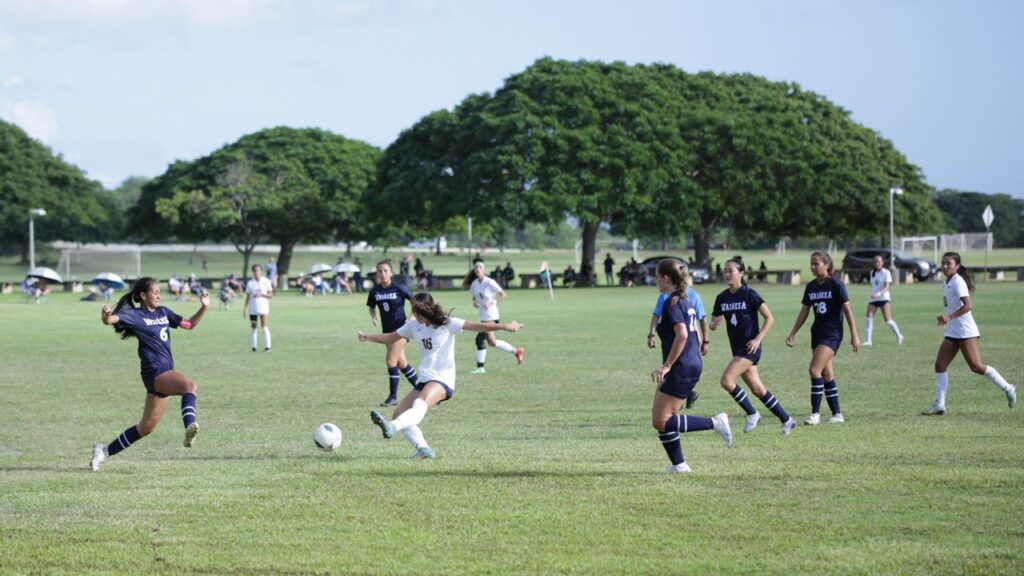HONOLULU — Hawaii's soccer world breathed a collective sigh of relief Tuesday morning when the City and County of Honolulu announced it was not considering the Waipio Soccer Complex as a new landfill on Oahu.
Navy officials who manage land on the Waipio Peninsula recently informed Mayor Rick Blangiardi that they “cannot support the development of a landfill on this land,” according to a city news release.
“From the moment I heard the news, I had the biggest smile on my face all day,” Scott Keopuhiwa, president and executive director of the Hawaii Youth Soccer Association, told Spectrum News in a phone interview. “We’re really excited that they’re not considering Waipio as a landfill.”
Concerns have been mounting in the soccer world since March, when the archipelago's sporting hub for more than two decades was named as a potential replacement for the Waimanalo Gulch landfill, which is scheduled to close in 2028.
The expansive Waipio Soccer Complex features 21 fields on 288 acres, including the 4,500-seat Waipio Peninsula Soccer Stadium, where the University of Hawaii and smaller colleges play. There, high school and club teams compete for the championship.
Keopuhiwa and his colleagues first learned that land reclamation was being seriously considered about a year ago. He said he considers Waipio a “second home” where he holds weekly events for HYSA's approximately 7,500 members. HYSA and other organizations consider it an ideal location for league games, tournaments, camps and clinics.
The city had floated the idea of building a new soccer complex, possibly on West Oahu.
“As time went on, it became clearer. Right after the mayor's State of the State address, right after he said Waipio was a prime candidate for becoming a landfill. “I was really shocked that it happened,” he said. “I think that’s what got our attention the most.”
A Change.org petition started by Hawaii Soccer Association President Sergio Boglioli calling for the status quo in Waipio to remain has garnered more than 21,000 signatures as of Tuesday afternoon.
“This is not about one team, one league, or one association. This is about the entire football community across the state,” Boglioli wrote. “The negative impact this will have on tens of thousands of players, coaches, referees and spectators is beyond anyone's imagination.
“The Waipio Soccer Complex has been the heart and soul of Hawaii soccer for the past 24 years, contributing to the creation of national championship teams and the development of many professional players. Every week, thousands of children and adults will utilize this park with island, mainland and international teams.”
The city estimates that about 30,000 soccer players regularly use the space.
University of Hawaii soccer coach Michelle Nagamine told Spectrum News that a new soccer facility on West Oahu would put an additional burden on families who are accustomed to making sacrifices to commute to Waipio on the west side of downtown. He said he was deaf.
“I think there was a huge sigh of relief for the soccer world, including my team,” Nagamine said. “I don't want to sound too dramatic, but I think it could have had a really, really negative impact on the youth soccer market in Hawaii.
“It’s great to see the football community coming together to make their voices heard.”
Her team will play the entire 2024 season in Waipio, with future seasons likely to be night games, although Cal State's new on-campus soccer venue is still under construction. According to Nagamine, although there have been some delays, the project is currently scheduled for completion in January 2025.
Before Waipio opened in September 2000, Kapiolani Park was the closest thing to a soccer hub in Hawaii, but Keopuhiwa said the ability to play on up to six fields at the same time gave it a completely different feel. I did. He was part of then-Mayor Jeremy Harris' administration's task force to get Waipio back on track.
Keopuhiwa and others have attended City Council committee meetings and submitted testimony to the state Legislature in recent months.
He said he was “shocked and pleasantly surprised” by the Navy's decision this early in the process, but grateful. Even if it wasn't, he was ready to keep fighting.
Admiral John C. Aquilino, commander of the U.S. Indo-Pacific Command, signed the Navy's decision, which cited the Navy's “mission-critical operational and training activities in coastal waters” and the vicinity of the Waipio Peninsula.
The city has already removed federal land in Waianae from consideration, and the military has removed a potential site near Bellows Air Force Base in Waimanalo, according to the announcement.
The city has indicated it may seek amendments to shorten the “buffer distance” of new landfills to make more land available.
Brian McInnis covers the state's sports scene for Spectrum News Hawaii. Contact him at brian.mcinnis@charter.com.


